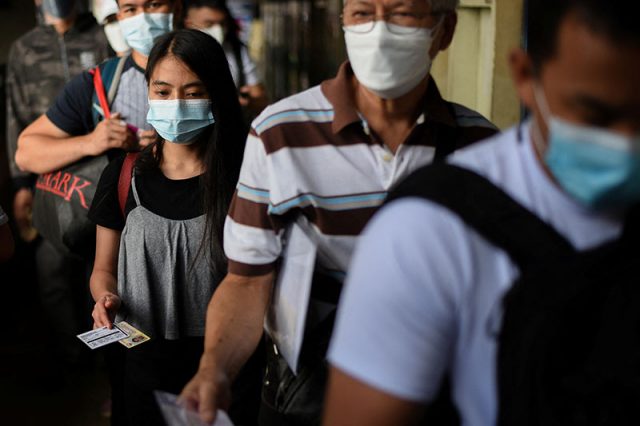
Despite the recent low number of COVID-19 cases, Filipinos warned each other to continue to adhere to the minimum public health protocols after OCTA Research Group‘s forecast report.
OCTA Research fellow Guido David said that the Philippines may see an uptick in active coronavirus infections as high as 50,000 to 100,000 soon, considering the surge being experienced by other countries.
According to him, the country has similar characteristics to South Africa and India, both recording an increase in COVID-19 cases.
David said that in a span of one week, South Africa’s new cases have jumped from 1,000 to 4,000.
Meanwhile, cases in Delhi, India, jump from a hundred to a thousand.
“Bakit concerning ito? Kasi ‘yung situation sa atin, medyo sumusunod tayo sa situation ng a few countries like South Africa, India, and Indonesia,” David said in a press briefing.
“Dahil sa pagtaas ng kaso sa South Africa at India, I think it is very likely na makakakita tayo ng pagtaas ng bilang kaso sa Pilipinas sometime in the near future. Hindi ko masasabi kung kailan ‘yan, kung sa May or sa June, pero dahil nakikita na natin ito sa South Africa at sa India, it is likely na mangyayari dito,” he added.
David said that the Omicron subvariants BA.4 and BA.5 are responsible for South Africa’s surge, while the subvariant BA 2.12 is responsible for Delhi.
The Department of Health previously said that a 50% decrease in the observance of the minimum public health protocols in Metro Manila might result in 25,000 to 60,000 new COVID-19 cases per day.
OCTA Research’s warning urged Filipinos to issue reminders about constantly adhering to the preventive measures against the virus.
“Mahusay na ipatupad ang tamang pagsusuot ng mask, palaging malinis ang kamay at magpabakuna. Stay healthy and safe everyone!” a Facebook user said.
“Follow minimum public health standards, always wear face mask in public places (and do) regular sanitation,” another online user commented.
The minimum public health protocols are the consistent wearing of face mask, practicing physical distancing of at least one meter apart, constant handwashing and observing proper ventilation in spaces.
“Sa mga kampante masyado diyan… mga matigas ang bungo, ingat po tayo, ‘wag natin hintayin matulad tayo sa ibang bansa lalo na (sa) China… kawawa mga (pamilya) natin,” a different Filipino commented.
Another OCTA Research fellow, Fr. Nicanor Austriaco, said that the country should increase the rollout of COVID-19 boosters.
“It is important at this point, in the next month or so, that we increase the boosting to protect ourselves and our loved ones against these three emerging variants. Any of these variants could trigger another surge in our country when it arrives because these three will outcompete the BA.2,” he said.
Omicron BA.2 is the dominant Omicron subvariant in the country, with higher transmissibility than the main Omicron variant.
Omicron descendants
Omicron subvariants BA.4 and BA.5 have been reported in South Africa and other European countries.
According to physician Maria Van Kerkhove, lead epidemiologist of the World Health Organization, these have “less than 200 sequences available so far.”
She added that while they are tracking the subvariant, they “haven’t seen any change in epidemiology or severity” yet, as of April 13.
On the other hand, Omicron subvariant BA.2.12 is reportedly causing a surge of COVID-19 cases in New York.
The Korea Disease Control and Prevention Agency also said that it has made up 10% of the circulating variants in South Korea.
The agency said that BA.2.12 is estimated to be about 20% more transmissible than BA.2.
National Geographic likewise reported that BA.2.12 was responsible for 20% of all the COVID-19 cases in the United States in early March, the month when it was discovered.









